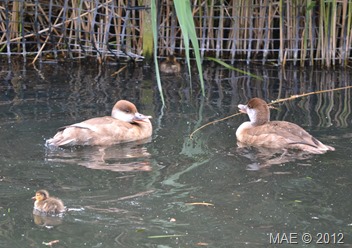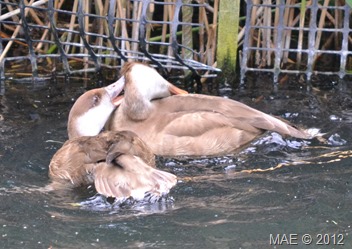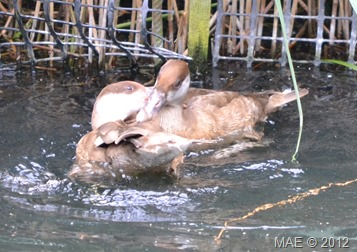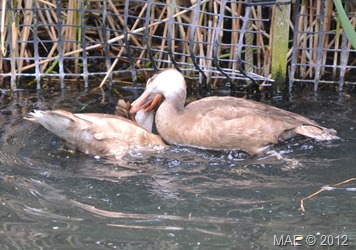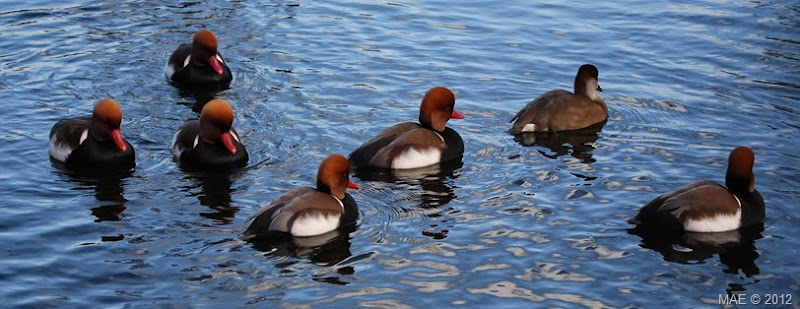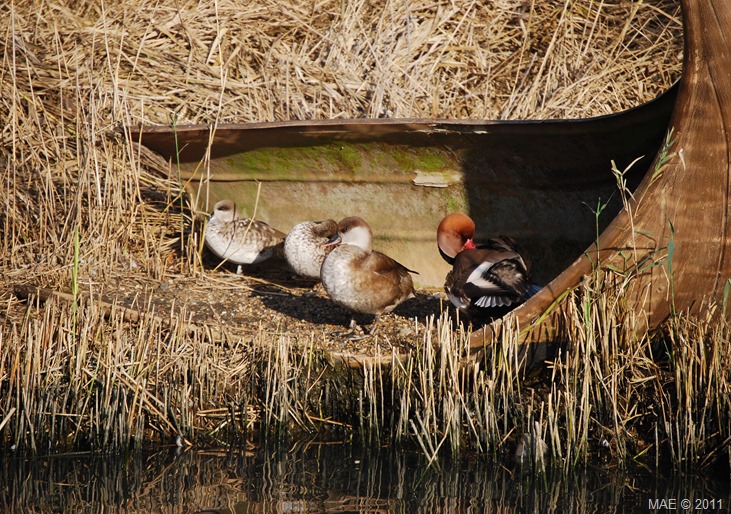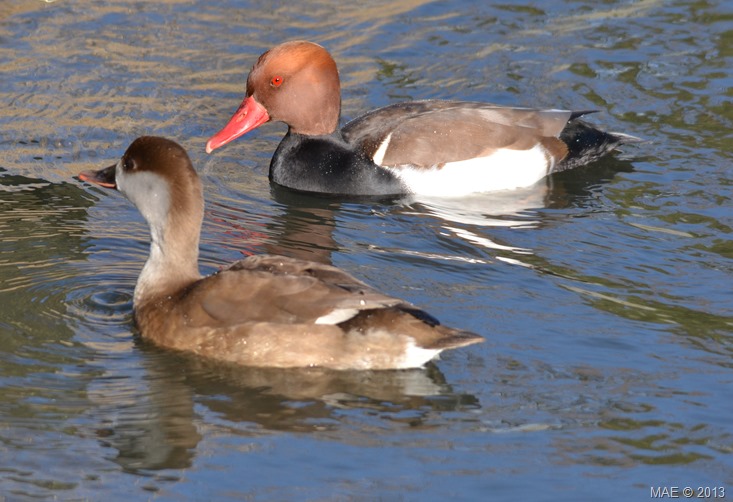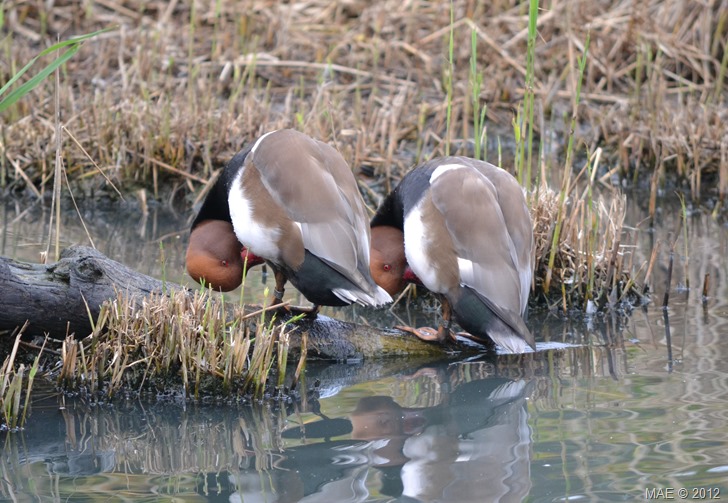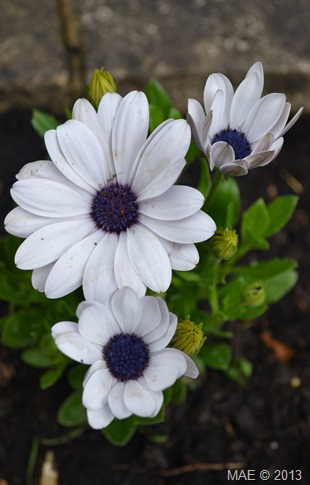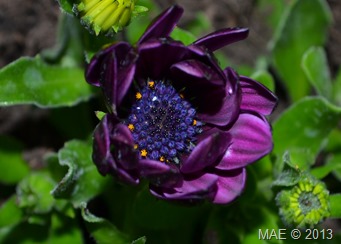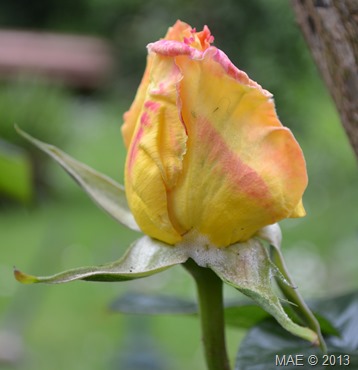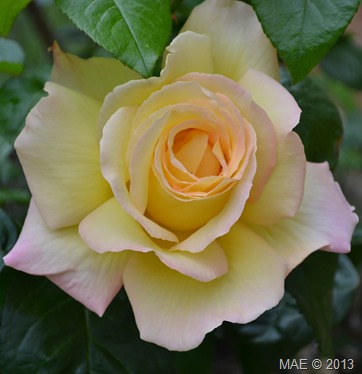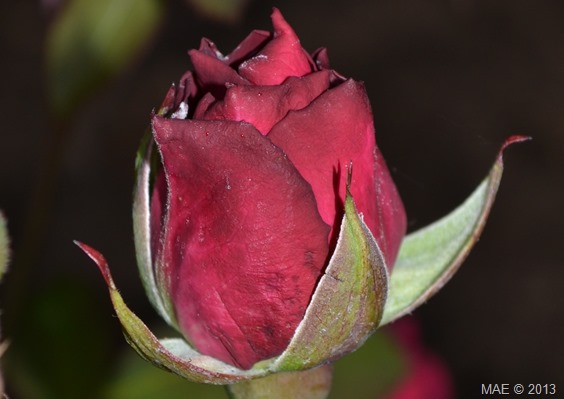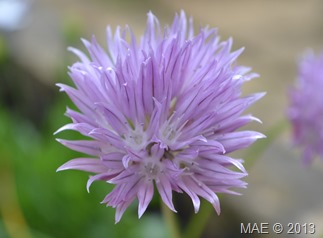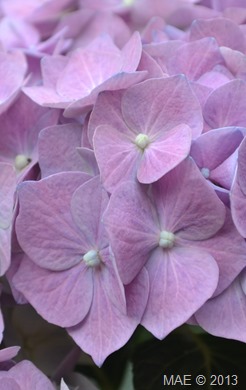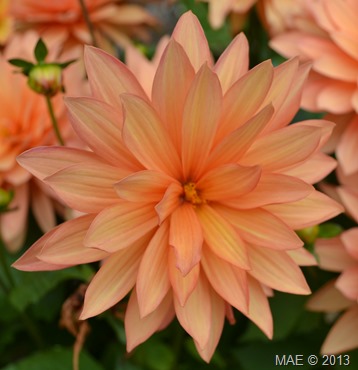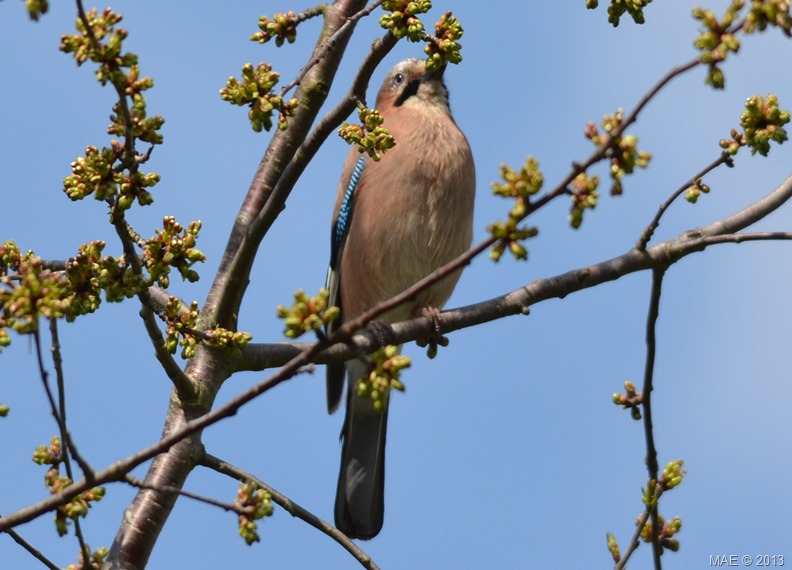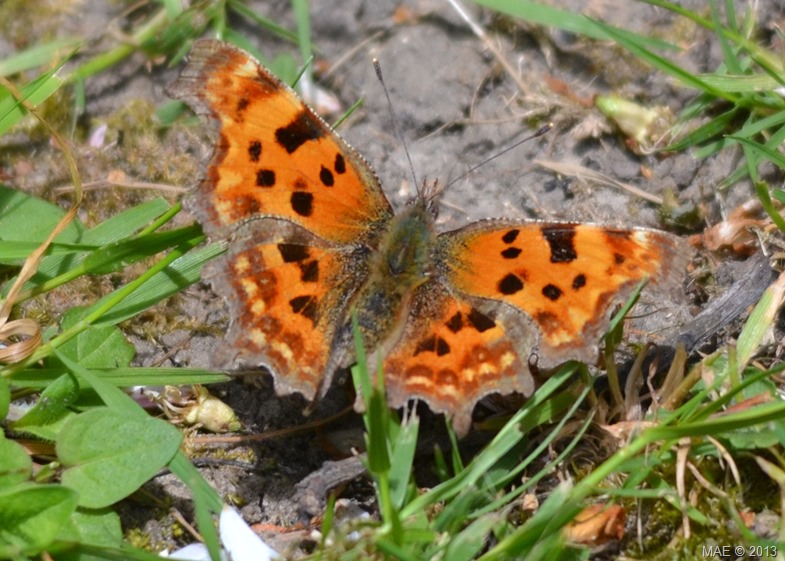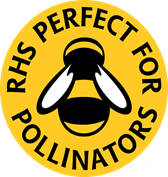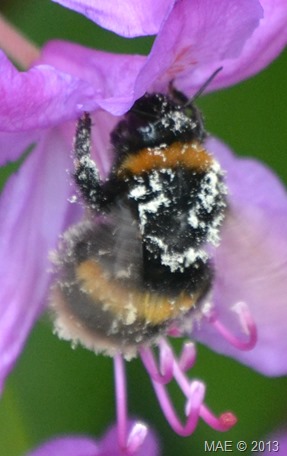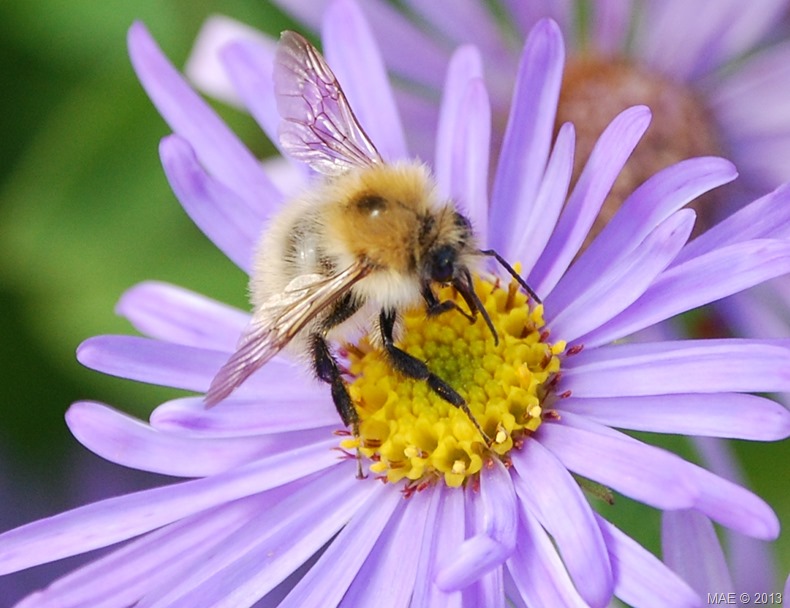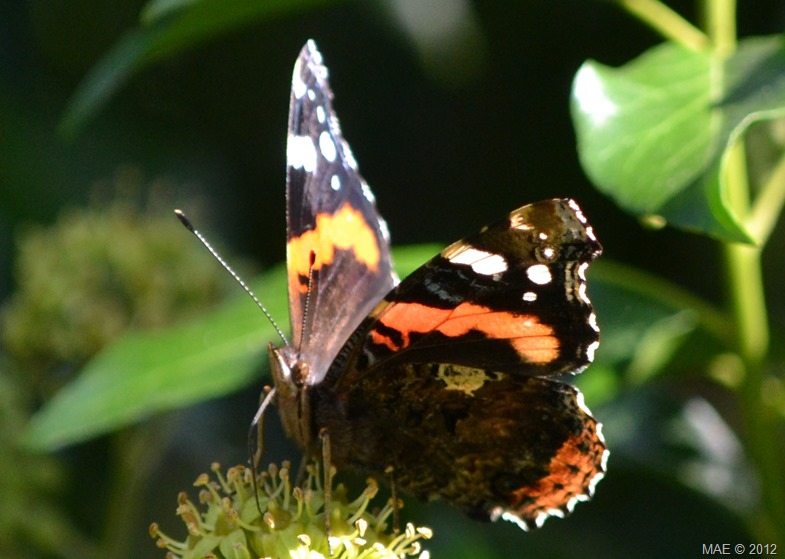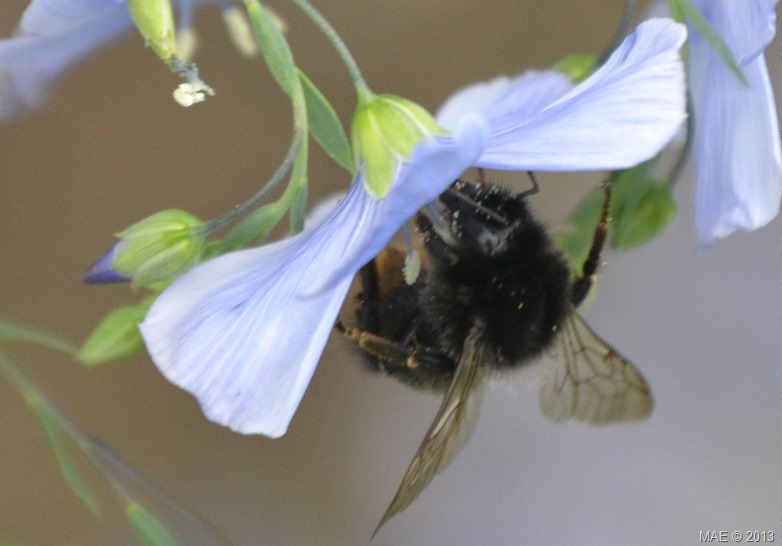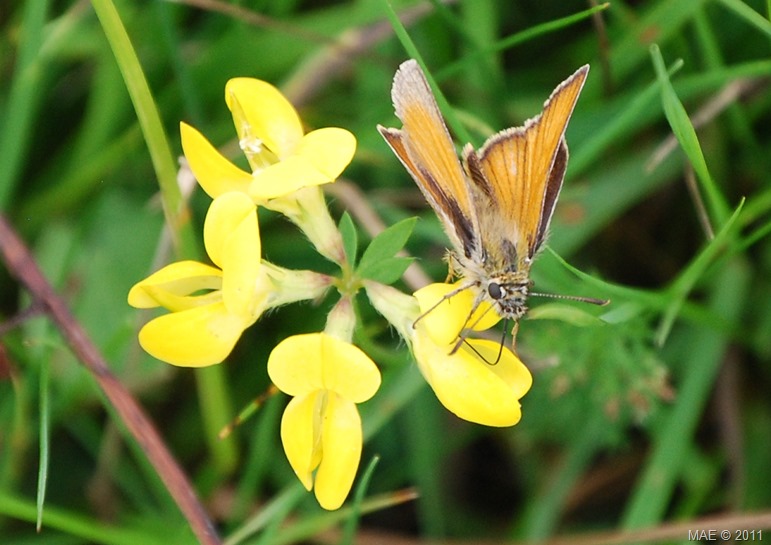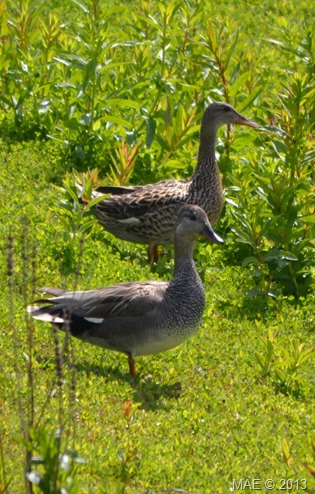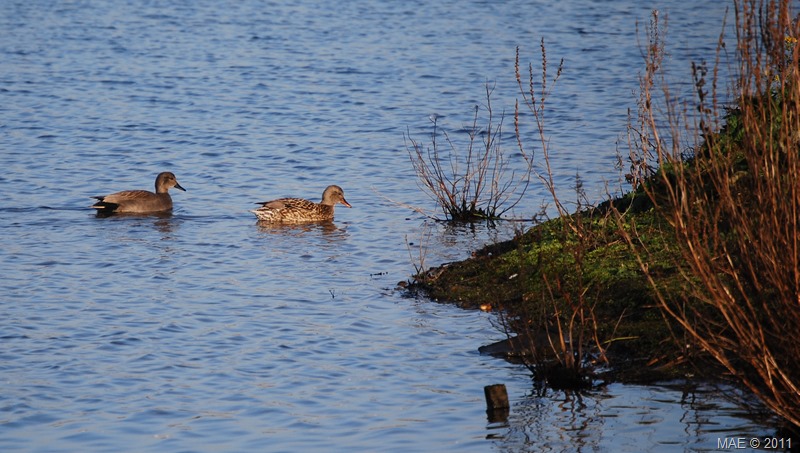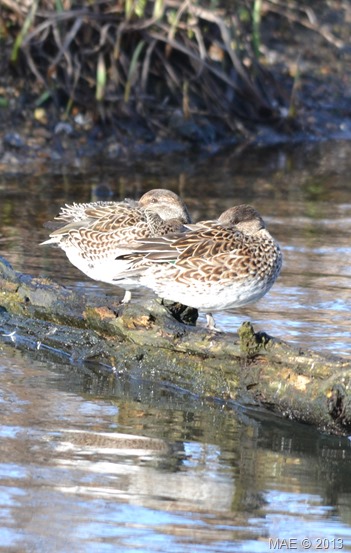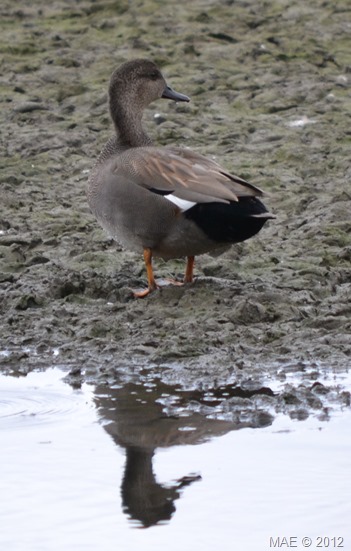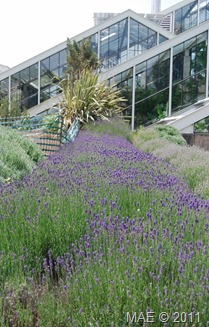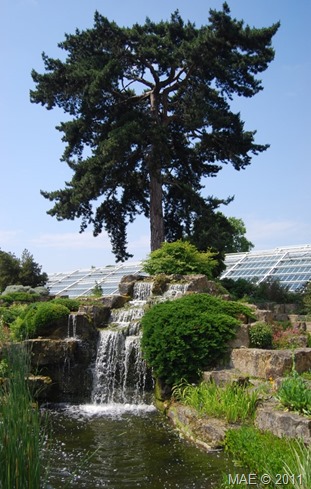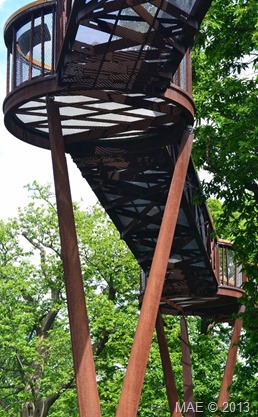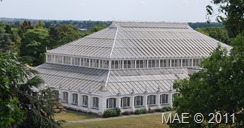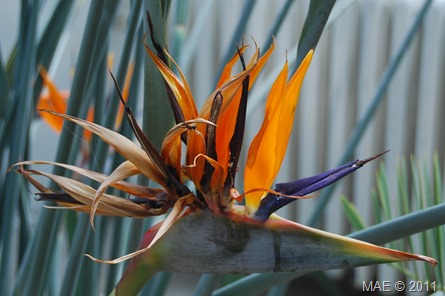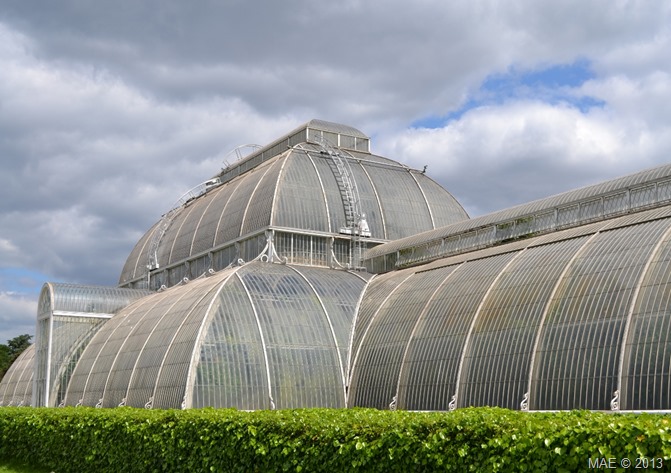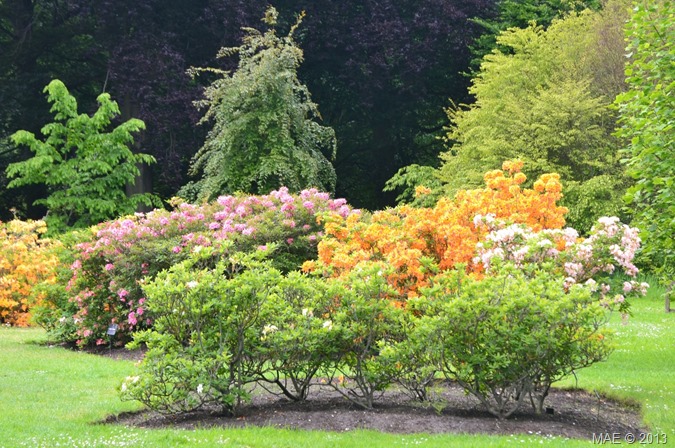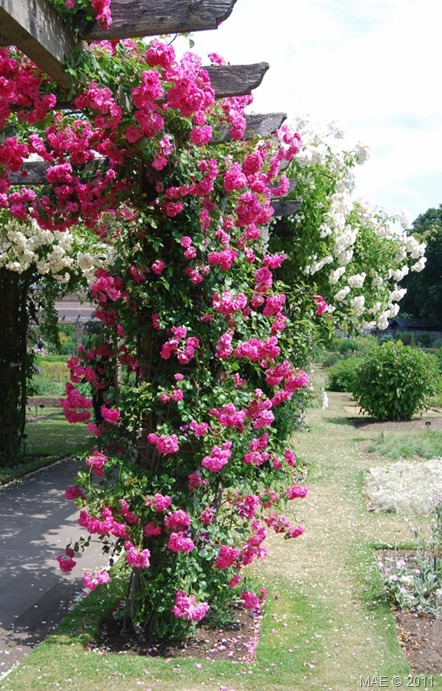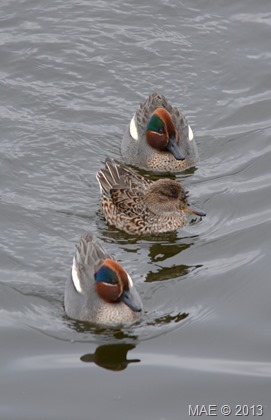 The top banner of this blog shows 7 male and 1 female Common Teals. Whilst I believed this to be a good choice because it is a nice stretched picture, I also believe this duck to be one of the most beautiful ones existing. And as I wrote before: there is nothing common about the Common Teal.
The top banner of this blog shows 7 male and 1 female Common Teals. Whilst I believed this to be a good choice because it is a nice stretched picture, I also believe this duck to be one of the most beautiful ones existing. And as I wrote before: there is nothing common about the Common Teal.
The dictionary describes the word teal as: any of several small, short-necked freshwater ducks, especially of the genus Anas, that feed on the surface of the water and often have brightly marked plumage. And if you go into the etymology of the word, you will find descriptions like: early 14c., probably from an unrecorded Old English word cognate with Middle Dutch teling "teal," Middle Low German telink, from West Germanic “taili”. As the name of a shade of dark greenish-blue like the colour patterns on the fowl's head and wings, it is attested from 1923. The Dutch word for teal is indeed Taling.
The Common Teal or Anas Crecca is a duck that can be seen mainly in the winter in England and The Netherlands, because they breed in Finland and other parts of Scandinavia during the summer. They can also be found in Russia in the sum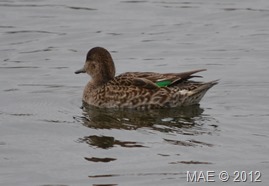 mer.
mer.
The Dutch name is Wintertaling which translates as winter teal. They find their food just under the surface as they would, being a teal.
But their most remarkable feature remains their very bright colours with a green patch on the eye for the males and a very bright green feather on their left side for both sexes.
In this blog I will show some pictures of different types of teals. They all are remarkably beautiful as I hope these pictures will show.
 The Agreement on the Conservation of African-Eurasian Migratory Waterbirds (AEWA) is an intergovernmental treaty dedicated to the conservation of migratory waterbirds and their habitats across Africa, Europe, the Middle East, Central Asia, Greenland and the Canadian Archipelago. In June 1995 the final negotiation meeting was held in The Hague. The Meeting adopted the Agreement by consensus and accepted with appreciation the offer of the Government of the Kingdom of the Netherlands to act as Depositary.
The Agreement on the Conservation of African-Eurasian Migratory Waterbirds (AEWA) is an intergovernmental treaty dedicated to the conservation of migratory waterbirds and their habitats across Africa, Europe, the Middle East, Central Asia, Greenland and the Canadian Archipelago. In June 1995 the final negotiation meeting was held in The Hague. The Meeting adopted the Agreement by consensus and accepted with appreciation the offer of the Government of the Kingdom of the Netherlands to act as Depositary.
One of the ducks that is conserved under this treaty is the Cape Teal or Anas Capensis. They can be seen all year round in sub-Saharan Africa, but there are also some in Regent’s Park in London as well as in WWT London. Their distinctive red bill makes them very recognizable.
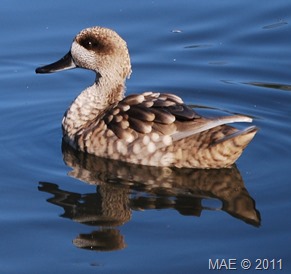 Another teal that is protected by AEWA is the Marbled Teal or nowadays called Marbled Duck. Because they do dive as well for their food. Their Latin name is Marmaronetta Angustirostris. They can be found all over Asia, with concentrations in Turkey and Armenia as well as Iraq.
Another teal that is protected by AEWA is the Marbled Teal or nowadays called Marbled Duck. Because they do dive as well for their food. Their Latin name is Marmaronetta Angustirostris. They can be found all over Asia, with concentrations in Turkey and Armenia as well as Iraq.
They tend to be quite gregarious, especially during the nesting/breeding season. Before moving from the wintering grounds to the spring breeding grounds, pairs form strong seasonal pair bonds that lasting until incubation. The female incubates between 4 and 12 eggs.
They normally live near fresh and brackish shallow pools, boggy lakes and marshes with abundant vegetation, within lowland arid country. In the winter it uses larger, more open waters and temporary pools (Source: Dudley Zoological Gardens).
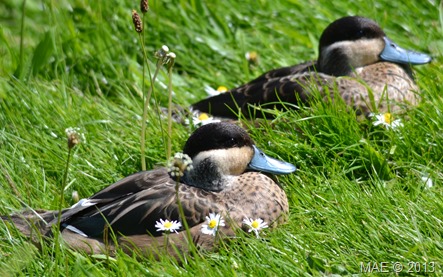 Again form the sub-Saharan region and again protected by AEWA is the teal with the most funny name and funny colours: the Hottentot Teal or Anas Hottentota.
Again form the sub-Saharan region and again protected by AEWA is the teal with the most funny name and funny colours: the Hottentot Teal or Anas Hottentota.
Especially their very blue bill is a distinctive feature.

Crossing over to South America, you will find the Ringed Teal or Callonetta Leucophrys. They breed in north-west Argentina and Paraguay, but also in Bolivia, Brazil and Uruguay. Their habitats include tropical, swampy forests and marshy clearings in well-wooded lowlands, as well as secluded pools and small streams.
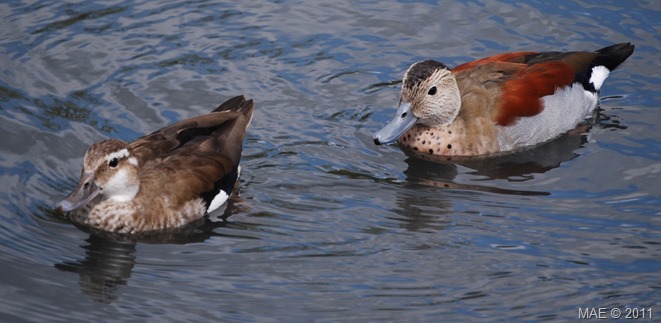
I have seen them in WWT London as well as in Regent’s Park. They look a bit like those wooden ducks you use during the hunt to lure ducks towards you.
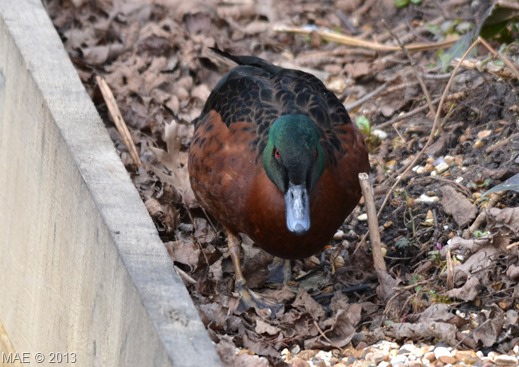 And to finish the tour of teals around the globe, here is an Australian teal: the Chestnut Teal or I Anas Castanea. And since survival is paramount in Australia, they are omnivores and are indifferent to saline water.
And to finish the tour of teals around the globe, here is an Australian teal: the Chestnut Teal or I Anas Castanea. And since survival is paramount in Australia, they are omnivores and are indifferent to saline water.
Chestnut Teals form monogamous pairs that stay together outside the breeding season, defend the nest site and look after the young when hatched. Nests are usually located over water, in a down-lined tree hollow about 6–10 m high.
Sometimes nests are placed on the ground, among clumps of grass near water. The young hatch and are ready to swim and walk within a day. (source: Wikipedia).
Apart from the Common Teal, the only other native teal in England is the Garganey or Anas Querquedula. They are true globetrotters and arrive in the spring, around May in Europe. But so far, I have not seen one. Therefore I have to settle for the Wikipedia webpage…and keep looking for them. A nice mission for the coming period!
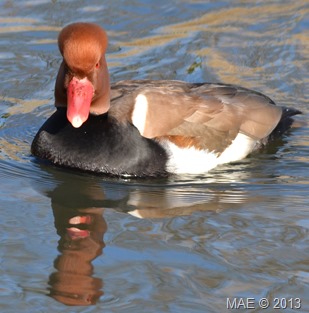 The duck stems original from Asia and thrives very well in moderate climates, as long as there are lakes with enough vegetation on the bottom of it. Red-crested Pochards build a nest by the lakeside among vegetation and lay 8-12 pale green eggs. The birds' status in the British Isles is much confused because there have been many escapes and deliberate releases over the years, a
The duck stems original from Asia and thrives very well in moderate climates, as long as there are lakes with enough vegetation on the bottom of it. Red-crested Pochards build a nest by the lakeside among vegetation and lay 8-12 pale green eggs. The birds' status in the British Isles is much confused because there have been many escapes and deliberate releases over the years, a s well as natural visitors from the continent. However, it is most likely that they are escapees that are now breeding wild and have built up a successful feral population. (Source: Wikipedia)
s well as natural visitors from the continent. However, it is most likely that they are escapees that are now breeding wild and have built up a successful feral population. (Source: Wikipedia)